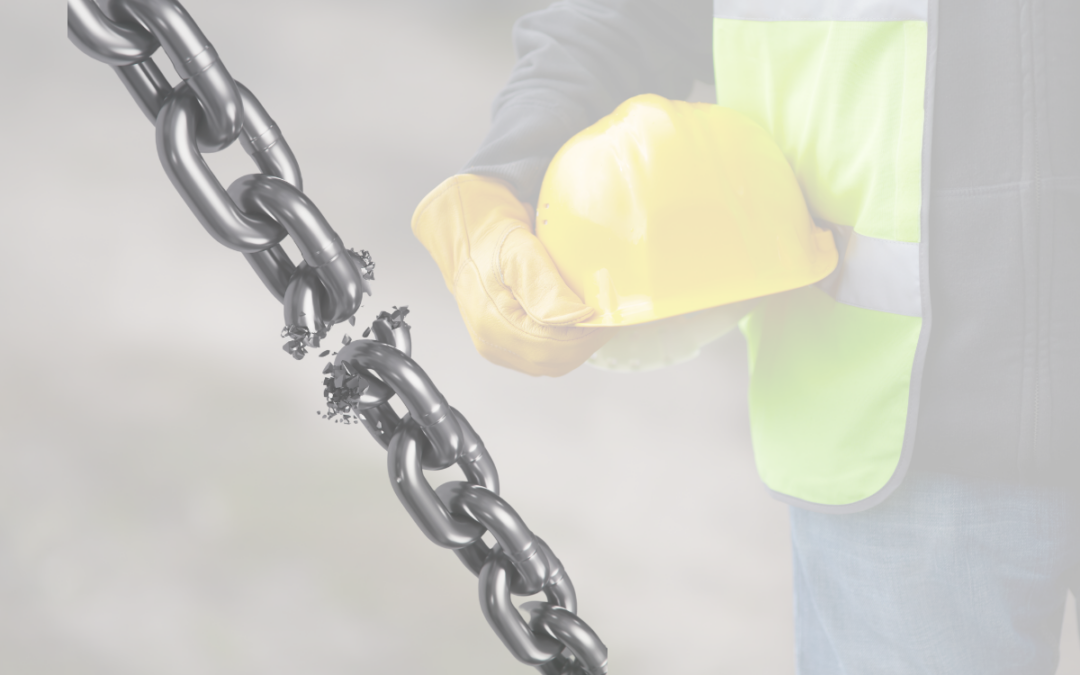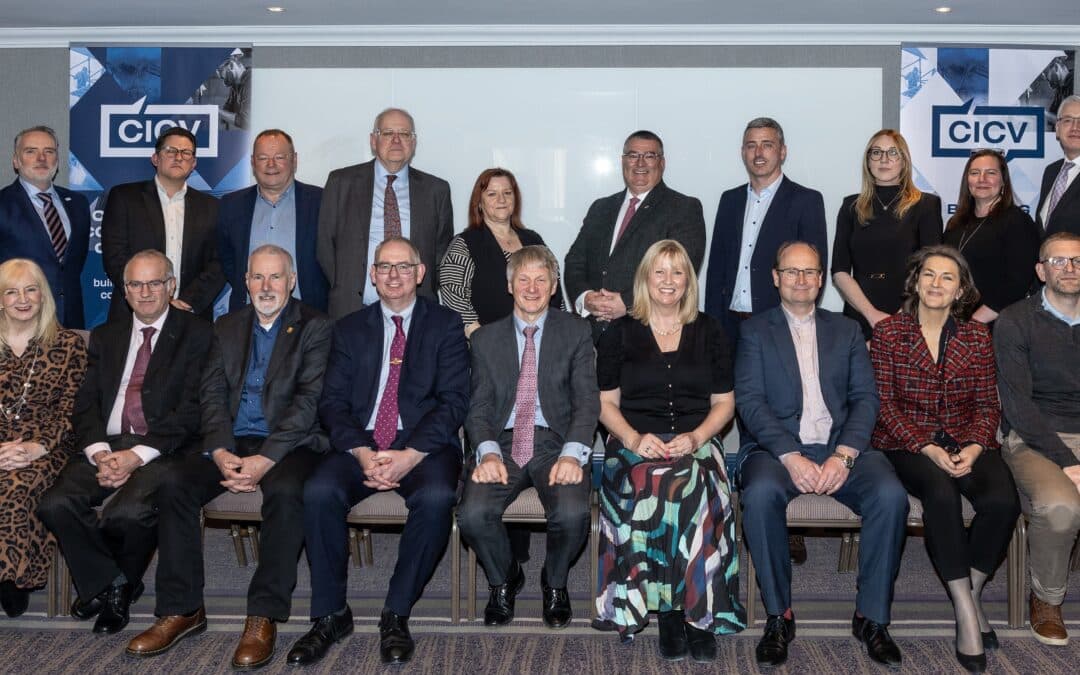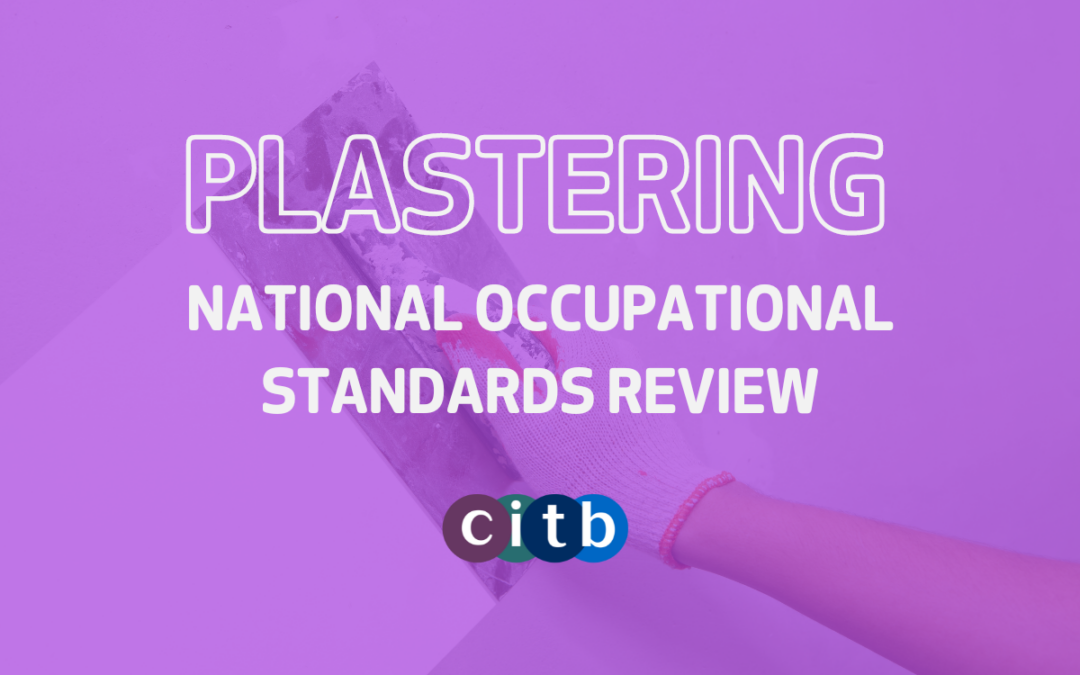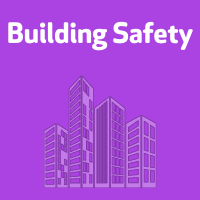
by Clair Mooney | 15 Aug, 2024 | Contractual and Legal
FIS Chief Executive Iain McIlwee will be speaking at the Conflict Avoidance Conference on 2 October in London. Iain will be discussing the Conflict Avoidance Pledge including the tools required to avoid and manage emerging disputes.
Speakers include Sir John Armitt, Chair of the National Infrastructure Commission, Tim Tapper, Director of Contract Services at Turner and Townsend, Sue Barrett Head of Contracts & Procurement at Houses of Parliament Restoration & Renewal and FIS CEO Iain McIlwee.
Commenting on his contribution on one of the panels, FIS CEO Iain McIlwee said:
“I will be using data from the Reading Report and the ongoing research and dialogue Finishes and Interiors Sector has with our community to make the case that better buildings need better contracting. Better Safety and Sustainability are for many locked away by irresponsible contractual appointments and punitive combative behaviours. If you want to unlock better mental health in construction, better occupational health, genuine net zero deliverables, a collaborative approach to building safety and the strategic planning that underpins investment in the skills and technology needed to improve productivity, then we do need to start here. If you disagree, come along and tell us why, if you agree support the Pledge, come along and share ideas and if you aren’t sure get yourself along and listen to the debate”.
Places at the conference are limited, so please book early to avoid disappointment – you can secure your place here.
Should you sign the Conflict Avoidance Pledge? Find out why FIS is supporting it here.

by Clair Mooney | 12 Aug, 2024 | Health and Safety, Member Benefits, Technical
FIS is thrilled to announce a new partnership with UKATA, a leading authority in asbestos training. This partnership solidifies the collaboration between the two organisations and aims to further enhance the education and training opportunities related to asbestos across the construction and interiors sectors.
This new relationship reflects the commitment of both organisations to work closely together in advancing asbestos awareness and safety measures across the industry. By combining their expertise, resources, and industry knowledge, UKATA and FIS intend to strengthen efforts to prevent asbestos-related diseases and ensure the highest standards of safety in asbestos management.
Debbie Nixon, UKATA Senior Operations Manager expressed her excitement about the partnership saying,
“We are delighted to formalise our collaboration with the Finishes and Interiors Sector, and I look forward to contributing to our collective efforts to raise awareness about the dangers of asbestos.”
Iain McIlwee, Chief Executive of FIS commented,
‘Asbestos has slipped out of the headlines a bit in recent times, but we cannot get complacent. It is true that usage has been banned since the turn of the century, but it was so widely used historically that we will continue to encounter it in refurbishment works for many, many years to come. If disturbed and inappropriately managed, it is a killer and one of the worst we have known in construction – there is no safe level of exposure. It is critical that construction workers know how to identify and react when they encounter asbestos, not just for their own safety, but for all those around them. This new partnership is about ensuring that the next generation of construction workers have access to the training they need and are not at risk from decisions made in the past and eminently avoidable mistakes that ignorance and complacency may allow today’.
Both UKATA and FIS share a common commitment to asbestos awareness, training, and safety.

by Clair Mooney | 12 Aug, 2024 | Market data
The Construction Products Association’s latest State of Trade Survey showed early signs of recovery for the construction product manufacturing sector in the second quarter of 2024. Both heavy side and light side firms reported a quarterly increase in product sales volumes, although concerns remain over the near-term strength of demand and labour availability.
In 2024 Q2, a balance of 30% of heavy side manufacturers reported that sales of construction products increased, marking the first quarterly growth since 2022 Q2. Alongside this, 13% of light side manufacturers reported a rise in product sales.
Despite growth over the quarter, comparisons with a year earlier remained weak, reflecting two years of flatlining GDP growth and an extended period of interest rates being held at peak resulting in a significant reduction in demand from private housing new build and repairs, maintenance and improvement (rm&i). Manufacturers’ expectations for the next 12 months were positive in Q2, with growth expected by both the heavy side and the light side. Nevertheless, the strength of demand continued to register as a concern, whilst a record-high proportion of manufacturers flagged up concern over the availability of labour.
Rebecca Larkin, CPA Head of Construction Research said:
“After an extended period of declining sales, particularly on the heavy side, encouragingly we are now seeing the green shoots of recovery. For the heavy side this was the first quarterly growth recorded in two years and given this context, it is perhaps not surprising that sales volumes were still reported lower when comparing to a year earlier given the longer-running weakness experienced by product manufacturers feeding into a slower residential construction sector.
“Whilst cuts in interest rates are expected to be the catalyst for a recovery in the two largest sectors of construction, private housing and private housing rm&i, manufacturers continue to highlight both demand-side and supply-side challenges. In common with construction, one of the industry’s biggest longer-term issues will be attracting and retaining workers.”
Key survey findings include:
- A balance of 30% of heavy side firms and 13% of light side firms reported that construction products sales rose in 2024 Q2 compared with 2024 Q1, the first heavy side growth in two years
- Comparing 2024 Q2 with 2023 Q2, 30% of heavy side manufacturers reported a decrease in sales, on balance
- 56% of heavy side manufacturers and 23% of light side manufacturers anticipated a rise in sales over the next 12 months
- 57% heavy side manufacturers and 49% of light side manufacturers cited ‘demand’ as the key concern for sales over the next 12 months
- 29% of heavy side manufacturers also cited ‘labour availability’ as a concern, the highest proportion on record; this proportion was 27% for light side manufacturers
- All manufacturers reported an increase in wages and salaries compared to a year earlier
FIS members can access the full report here.

by Clair Mooney | 8 Aug, 2024 | Main News Feed, Skills
As construction output is expected to grow the finishes and Interiors sector needs to recruit new entrants so that it can keep working. The STEM Ambassador Programme is partnered with the Construction Industry Training Board (CITB) to facilitate the Go Construct Construction STEM Ambassador scheme. Through this collaboration, they aim to showcase the amazing career opportunities in construction and inspire young people to work in the industry.
Go Construct STEM Ambassadors act as the face of the industry for young people, inspiring them to consider a career in construction and the built environment through sharing their experiences and promoting opportunities. The commitment is to be involved in at least two activities per year. Ambassadors lead a wide range of activities, including:
- Running a trade stand at a careers fair, answering questions and handing out leaflets.
- Delivering a talk, sharing your experiences of getting into and working in the industry.
- Leading practical sessions or workshops, giving young people a taste of life in construction.
- Providing one-to-one mentorship to someone who is just starting out.
- Network with like-minded professionals, developing your own career as an ambassador.
Not only is becoming a Go Construct STEM Ambassador a great way to develop your employability skills and become a part of a community, through activities you will be helping to inspire the next generation of construction workers and change perceptions about the industry and the Finishes and Interiors Sector.
Please contact Marie Flinter a call on 0121 707 0077 or 07799 903103 or email marieflinter@thefis.org for more information and to join the upcoming webinars.
- Tuesday 20 August – 12:00/13:00
- Tuesday 17 September – 10:00/11:00
If you are already a registered STEM Ambassador working in the finishes and interiors sector, please let Marie know.

by Clair Mooney | 28 Jun, 2024 | Main News Feed
The Construction Leadership Council has today published a letter of advice for the next Government, detailing a series of policies that would help the construction industry create economic growth, build much-needed new housing and deliver the UK’s infrastructure pipeline.
The letter, signed by 16 members of the Construction Leadership Council, has been sent to the leadership of both the Conservative and Labour parties, and is intended to offer non-partisan guidance on closing the industry’s productivity gap and maximising its contribution to the UK economy. Specific measures include a presumption in favour of development on small sites, to support smaller housebuilders and improve housing supply, committing to publish an updated five-year National Infrastructure and Construction Pipeline shortly after any budget or fiscal event, and setting out a 10-year policy and regulatory roadmap for the retrofit sector.
The CLC argues that the policies would each help to unlock productivity in the construction industry, encouraging investment in new capabilities, skills and technology; closing the gap between the sector and the wider economy – in turn helping to create £45bn of additional added value annually for the UK; the equivalent to 2% of GDP.
The policies are grouped under five ‘Ps’ – pipeline, procurement, places to live, performance and people – and represent the collective priorities of the CLC members across all parts of the construction industry, from SME housebuilders and materials suppliers to the largest contractors and clients, as well as the CLC’s 2023 report into construction productivity.
The CLC is a non-political body and works in partnership between industry and Government. As such, the letter is addressed to any future government, and has been written to be agnostic to the outcome of the 2024 General Election.
Mark Reynolds, Co-Chair of the CLC and Chairman and Chief Executive of Mace, said:
“Whatever the result of the election in July, the fact remains that the construction industry offers any incoming government the biggest opportunity to create sustainable economic growth and unlock the potential of peoples, places and projects all over the country.
“The CLC is asking politicians of all parties to take this opportunity seriously, review our recommendations and ensure that businesses all over the UK are given the certainty and confidence they need to invest in a brighter future for the sector.”

by Clair Mooney | 18 Jun, 2024 | Technical
FIS has today launched its Best Practice Guide – Repair of Historic Ceilings to help promote best practice in the repair and restoration of historic plaster ceilings.
Produced by the FIS Heritage Plaster Group which includes representatives from the plastering trade and building conversation, and written by Sarah Mayfield, a building conservator, sculptor and ornamental plasterer, the guide is an invaluable aid to building owners, managers, architects or surveyors, plaster contractors or conservation officers. This publication will guide them through the specification of traditional ceilings, the multiple varying scenarios and the advantages and disadvantages of each repair technique in accordance with its historic value.
Split into sections, the guide covers everything from the principles of building conversation to understanding the history of the ceiling and its materials, along with the assessment process. It offers a series of points to consider when carrying out repairs in terms of the appropriate materials and techniques, and suspension methods, and includes:
- Guidance for inspection procedures, scope and site considerations
- Assessing the historic value and significant features
- Understanding past interventions, historic maintenance work to the ceiling and its value
- Future inspection regimes
- Competence of plaster inspectors and craftspeople
‘It’s a document written for the trade by the trade, and I think that gives it some strength and relevance,” said Roger Curtis MRICS, Head of Technical Resources, Operations Directorate at Historic Environment Scotland.
Commenting on the Guide, FIS Technical Director Joe Cilia said this guide is the culmination o almost three years work to ensure that the content was relevant, informative and importantly peer reviewed by the sectors conservators, craft experts and other associate bodies who work to ensure our heritage is maintained and recorded for others to see, enjoy, and study for years to come.
By increasing a level of understanding of the technical issues among key stakeholders, the guide will play a part in raising the standard of repairs so that the significance and authenticity of the ceiling can be assured.
FIS can trace its roots back in the plastering trade through the Worshipful Company of Plaisterers. FIS represents suppliers and contractors in the finishes and interior sector. Its members are vetted when they join and then every three years. They abide by a code of conduct and agree to carry out work in accordance with the FIS best practice guides.
A valuable resource for improving works package delivery, these guides work well when they are included in proposals and project plans to demonstrate how to best approach a project.
A searchable list of members can be found here

by Clair Mooney | 13 Jun, 2024 | Skills
FIS is continuing its work with No Going Back, an initiative to support prison leavers, and an opportunity has come up to visit HMP Brixton.
The visit will take place on Tuesday 25 June from 9am and we are looking for employers to join us to explain the pathways into the sector and how they can build a lasting career.
This visit will provide an opportunity to observe the Drylining training programme in action. Employers will witness the skills and dedication of the trainees firsthand. Additionally, there will be a chance to interact with the trainees, many of whom have shown a strong interest in pursuing careers in construction.
Employer involvement would not only bolster our rehabilitation efforts but also potentially address some of the skills gaps within the industry.
It would be valuable for employers with ongoing job openings to meet these men, as well as for those who are hesitant about hiring them. This interaction can help change perceptions and demonstrate the potential these men have to contribute positively in the workplace.
Instructors at HMP Brixton will provide details on the training individuals have undertaken during their sentence. Additionally, No Going Back and Employers can deliver an overall presentation (a talk on the company and pathways to roles in the industry) and men could showcase different drylining tasks.
There will then be dedicated time for one-on-one sessions between employers and the prison leavers.
If you can support this event, email beenanana@thefis.org by Wednesday 19 June.

by Clair Mooney | 6 Jun, 2024 | Main News Feed
FIS today celebrated the finishes and interiors sector with the announcement of the winners of the FIS 2024 Contractors Awards.
Members and their guests packed out the Nine Kings Suite at the Royal Lancaster Hotel in London to see the winners in the 10 categories receive their prestigious awards.
Independent Awards Judges Tony Pieri and Colin Hunter, who visited all project entered said:
“As judges, we take our responsibilities very seriously as we fully understand the hard work and endeavour everyone has applied to the project they have entered for the awards process. We recognise the pride you feel in your work as that is fundamentally why you have entered your project in the first place.
“This year the competition between entries has been extremely high, with most scores achieving the same benchmark for quality of workmanship. We then decide what percentage points to apply to each entry. Our in-depth assessment of the work covers a range of factors: sustainability, design input, problem-solving, logistics, value-added initiatives and integration.
“As ever, the final judging evaluation comes down to minimal decimal point differences between those achieving or not achieving the winning standards.
“We take our responsibilities seriously – we fully understand the hard work and endeavour undertaken on every project. Once again, you
all demonstrated the incredible ability of FIS members to achieve exceptionally high standards of workmanship.
“We congratulate all of you on your professionalism and expertise. And we thank you all for the time and courtesy extended to us.”
A final award was given for the Project of the Year, which was judged by guest architect Alain Speed of PRP Architects. Alain selected the overall Project of the Year from the winning contracts across all categories.
Alain said:
“Looking through the exceptionally high standards of installation in the category winners has been a pleasure. Space Interior
Systems’s wellness spa for HVN stood out for the beautifully crafted biomorphic shapes, seamlessly blending ceilings and walls and integrating sophisticated interior planting. The project met all the challenges of setting out, achieving a high quality finish, acoustic separation, a tight programme and working within a listed building. This required close collaboration with client ISG and architect zynk Design. All the hard work is now done, and people can enjoy sensory relaxation within these luxuriant interiors.”
About the FIS Contractors Awards
The FIS Contractors Awards are held annually to encourage and promote high levels of craftsmanship and design.

by Clair Mooney | 15 May, 2024 | Market data
It was a mixed quarter for construction product manufacturing in 2024 Q1, reflecting the varying demand in the different sectors of the construction industry that manufacturers’ products feed into. Sales declined for a seventh consecutive quarter for heavy side manufacturers, whose products are typically used in the earlier, structural stages of construction. Along with lower house building activity and fewer large home improvements projects, persistent rainfall in February and March is likely to have affected outdoor work and heavy side demand during the quarter. In contrast, light side sales increased in Q1, marking a swing back into growth after two quarters of decline. Light side products are more likely to be used in the interiors and finishing stages of construction and, therefore, would have been less affected by the weather. Light side demand also continued to be buoyed by the strength of refurbishment activity across the commercial and industrial sectors, as well as energy-efficiency work under government-funded schemes such as the Social Housing Decarbonisation Fund. Encouragingly, both heavy side and light side manufacturers shared a favourable view when looking ahead, with sales growth expected in both the next quarter and the next year as the economic and construction recovery begins to take hold from the second half of the year.
Key survey findings include:
• 36% of heavy side firms reported that sales fell in 2024 Q1, the seventh consecutive quarterly decline
• Sales rose for 24% of light side firms, swinging back to growth after two quarters of decline
• 79% of heavy side manufacturers and 59% of those on the light side expect sales to increase over the next 12 months
• Demand remains the factor most likely to constrain output in the year ahead
• Cost inflation continued to moderate for heavy side firms, but light side firms reported cost pressures from wages & salaries

by Clair Mooney | 14 May, 2024 | Skills
Following consultation with employers and NOCN the proposed End Point Assessment (EPA) practical element for Ceilings and Partitions is unworkable and some changes need to be made.
The findings were that each element, (core qualification and specialist option) should realistically take 10 hours each for a pass and an additional 8 hours for a merit to be completed over a 3-day assessment period.
In order for NOCN (National Open College Network) to apply to IfATE (Institute for Apprenticeships and Technical Education) for a dispensation to increase the time from the current completion time of two days to three days and to cover the areas taken out of the practical by questioning, we need the support from employers to confirm this will meet the needs of the sector.
If you are able to support this or would like further information, please contact Beena Nana by 24 May.

by Clair Mooney | 3 May, 2024 | Membership
We’re excited to reveal the shortlist for the 2024 FIS Contractors Awards – which promote and encourage high levels of craftsmanship in the finishes and interiors sector.
The awards showcase the very best of our industry and after months of project visits, our judges have determined their shortlist.
To see who made the shortlist click here
The winners in each category, along with the architect or interior designer of the winning project, will be announced in front of a packed audience at the FIS Awards Lunch on 6 June at the Royal Lancaster Hotel in London. The event is now sold out. If you would like to be added to the waiting list for tickets, email clairmooney@thefis.org
The standard of entries into this year’s Contractors Awards was extremely high, so we would like to congratulate all companies that entered.

by Clair Mooney | 2 May, 2024 | Main News Feed
After four years of virtual collaboration, the Construction Industry Collective Voice (CICV) convened its inaugural in-person meeting in Edinburgh in April, bringing together representatives from many of its 29 member organisations for the first time.
Alan Wilson, Chair of the CICV, opened the meeting by reflecting on the organisation’s evolution and its continuing commitment to Scotland’s construction industry, stating,
The CICV, born out of necessity during the pandemic, has become a beacon of collaboration. As we meet face-to-face for the first time, we reaffirm our commitment and strengthen our dedication to building on our foundation of unity and resilience.
Ivan McKee MSP, a longtime supporter of the CICV, also provided opening remarks that highlighted the forum’s significant impact on the industry. He praised the CICV’s role in representing a diverse range of sectors and professions and its influence on shaping industry standards and practices that resonate within both governmental and public realms.
The meeting itself focused on outlining the CICV’s strategic future and reinforcing its role as a principal advocate for the construction industry. Discussions included updates on the Construction Accord’s Transformation Plan, and how CICV members’ invaluable insights and expertise are being applied across its various working groups.
Following the meeting, Fiona Hodgson, Deputy Chair of the CICV, reflected on its outcomes, saying,
In an evolving construction landscape, the CICV’s role has become more crucial than ever. Today’s discussion not only reaffirmed our commitment to collective action and strategic foresight but also underscored our leadership in advocating for innovation and resilience within the construction industry.

by Clair Mooney | 30 Apr, 2024 | Technical
FIS Safety Alert: Suitability of gypsum-based systems in the construction of smoke shafts
Concerns have been raised with FIS that gypsum-based systems are being specified to construct smoke shafts for mechanically ventilated systems in some high-rise buildings. Members are advised that gypsum-based systems are typically tested for fire resistance, sound insulation, air permeability and robustness. These tests do not replicate the pressure differential conditions or measure leakage at ambient or elevated temperatures which may be required for this application.
Members are advised to be watchful for this detail in their tender requests and project specifications and seek clarification, especially where any specific requirement to meet performance in accordance with BS EN1366-8, the shaft is classified to BS EN 13501-4 or elevated negative air pressures are referenced. On design matters members should seek clarification from the Principal Designer and/or Engineering Services Designers and consult with Manufacturers with respect to any live or legacy specifications. They are also reminded to be watchful for any clauses in contract that may leave them with responsibility for the design, compliance, or cost of demonstrating compliance of such details.
If you have additional questions, please contact the FIS Technical team on 0121 707 0077 or email jamesparlour@thefis.org or joecilia@thefis.org
Subsequent to the publishing of above statement on the 3rd May 2024 the Smoke Control Association has issued a statement recommending that the materials and products used for smoke control ducts and shafts are tested in accordance with the test standards referred to in BS EN 12101-7 for multi-compartment smoke control ducts which is BS EN 1366-8.
BS EN 1366-8 covers air leakage, integrity, insulation, maintenance of cross-sectional area and mechanical stability under pressure, characteristics which are detailed within BS EN 13501-4.
The full statement from the SCA can be viewed here.
VISIT THE FIS BUILDING SAFETY ACT HUB FEATURING OUR E-LEARNING INTRODUCTION TO THE BUILDING SAFETY ACT COURSE HERE

by Clair Mooney | 30 Apr, 2024 | Market data
Construction firms are likely to experience mixed fortunes during 2024 and it will be highly dependent on which sectors they are operating in, according to the Spring CPA Construction Industry Forecasts. House builders and contractors working in housing new build and repair, maintenance and improvement (rm&i) continue to face a subdued environment. Conversely, firms operating in industrial, commercial refurbishment and fit-out or working on major infrastructure projects continue to enjoy strong levels of activity. Overall, after last year’s decline in activity (which is not reflected in the official ONS data), construction output is forecast to fall this year before recovery in 2025 and 2026 alongside stronger economic growth.
In terms of key risks to the forecasts, on the positive side, the possibility of earlier and faster interest rate cuts points towards slightly better economic prospects, which could benefit housing new build and rm&i. Conversely, on the negative side, an overly cautious Bank of England keeping interest rates high for longer may lead to an upward blip in mortgage rates, adversely affecting housing demand.
Total construction output is forecast to fall by 2.2% in 2024, a marginal downward revision from the 2.1% decline in the Winter forecast. However, output is forecast to rise by 2.1% in 2025, a marginal revision upward from 2.0% in the previous forecast. Further growth of 3.6% is anticipated in 2026, but clearly, there is greater uncertainty around activity in 2026 given the impacts of a potential new government on public sector spending plans, given that the government is the largest client in construction, accounting for around one-quarter of construction activity. Within the overall forecast figures this year, there are mixed fortunes across the different sectors. However, the key drivers of the decline in construction output in 2024 remain falls in both private housing new build and rm&i. There are positive and negative risks to the forecast for the UK economy and construction given the current number of political and economic uncertainties. As a result, alongside the forecast it is important to note the CPA’s Key Risks as well as the Upper Scenario and Lower Scenario, in addition to the forecast.

by Clair Mooney | 26 Apr, 2024 | Contractual and Legal, Employment
For new workers the Government has announced a number of changes to the Points‐Based Immigration System (PBIS). These seem to be designed to reduce overall net migration and do make it harder for FIS Members to engage overseas workers. The key changes are outlined below.
Workers need to earn more than under the old system
The earning threshold for the Skilled Worker visa has risen from £26,200 to £38,700, as well as raise the Immigration Health Surcharge from £624 to £1,035. The Shortage Occupations List will also be replaced with a new ‘Immigration Salary List’, which retains a general salary discount but includes fewer occupations (plastering and drylining is not on the list, they culled most of the construction workers on the grounds they want to incentivise the industry to do more to recruit and train local people).
Under the PBIS, most workers from outside the UK in construction are required to be ‘skilled workers’ and require a Skilled Worker visa to work in an eligible occupation.
Build UK have produced a helpful flow chart here to show how it now works in terms of gaining sufficient points
Employers need to pay more than under the old system
The Home Office has increased the fees for most types of visas, including the ‘Skilled Worker’ visa used by most workers from outside the UK in construction.
- For those applying for a visa from outside the UK, the fee is £719 for up to three years and £1,420 for more than three years.
- For those already in the UK extending, switching or updating their visa, the fee is £827 for up to three years and £1,500 for more than three years.
- For occupations on the Immigration Salary List (which has replaced the Shortage Occupation List), the fee is £551 for up to three years and £1,084 for more than three years, regardless of whether applying from in or outside the UK.
The fine for employing illegal workers has increase from £15,000 to £45,000 per illegal worker for a first offence and from £20,000 to £60,000 for repeated offences. More on the fees here.
Right to work checks are still important
Depending on the individual, employers have the following options for ensuring they have right to work in the UK: a digital check via a certified Identity Service Provider, an online check via the Home Office online service, or an in‐person manual document‐based check.
FIS is working with Migrate UK to help members navigate the changes. Migrate has produced specialist guidance for FIS Members (including a great webinar hosted for FIS Members: “How to hire skilled workers from the Global Talent Pool”) and the free consultation and discounted services available exclusively to FIS Members through this relationship here.

by Clair Mooney | 26 Apr, 2024 | Building Safety Act
FIS attended a Building Safety meeting earlier this week organised by BuildUK where Andrew Moore, Head of Operations Planning and Building Control at the Building Safety Regulator (BSR), and Martin Taylor, Executive Director at Local Authority Building Control (LABC), gave a unique insight into the latest phase of the Building Safety Regime from 6 April. Key points raised were that:
- The vast majority of Gateway 2 applications are for refurbishment and there are more small scale works in HRB’s than the regulator was anticipating.
- When applying for Building Control Approval, the Building Regulations compliance statement needs to contain a clear ‘narrative’ setting out how the e planned work will meet Building Regulations, including the guidance or standards used.
- Local Authority Building Control (LABC) is no longer able to provide pre‐planning advice in relation to applications for Higher‐Risk Building (HRB) projects where it would create a conflict with its role in providing building control services; however, it is anticipated that LABC will continue to signpost to best practice guidance.
- The role of Principal Designer should be undertaken by a lead designer who has authority over design decisions and is able to co‐ordinate the design work and challenge the design team to ensure all designs comply with relevant Building Regulations. In the event of a change in Principal Designer, there is a formal handover process within the regulations (section 11O) that must be followed.
- There is a need to clarify the requirements for hospitals and care homes at different stages of the HRB regime, for example whether Gateway Three approval is required before wards can be reoccupied after refurbishment work.
In a separate meeting with representatives of Building Control and the Design Sector, FIS were involved in discussions focussed on challenges in the design process. Confusions around the difference between offering design advice and being classified as a designer remain. It is critical that companies are clear on the extent of any design liability and adhere to the design control process when making decisions (beware the site fix). The other key part of the discussion was around what is Regulated Works and therefore when work in a HRB needs to be notified to the Building Safety Regulator and challenges around partial completion strategies that support phased occupation.
Other Building Safety News
In a written statement to Parliament last week, Secretary of State for Levelling Up, Housing and Communities Michael Gove confirmed that the new guidance on second staircases, which is intended to “provide additional capacity to reduce congestion, support egress and facilitate additional access for firefighting and rescue”, will apply nationally.
If you have any questions around the Building Safety Act, don’t hesitate to call FIS on 0121 707 0077 or email info@thefis.org and we’ll get back to you asap.

by Clair Mooney | 18 Apr, 2024 | Skills
CITB is looking for plasterers or construction employers in the plastering industry to help shape the future of this occupation. Individuals will join CITB’s Plastering – National Occupational Standards (NOS) review group to:
Develop NVQ and SVQ qualification structures for Plastering
Ensure your employer voice is heard
Shape the future of the Plastering
If you are interested in getting involved, complete this short form to register your interest https://forms.office.com/e/QiNRz99VqV or contact standards.qualifications@citb.co.uk
For more information please visit National Occupational Standards (NOS) – CITB

by Clair Mooney | 18 Apr, 2024 | Main News Feed
Build UK has recently updated its guide to the Building Safety Regime to include all the information published in connection with the latest phase of the regime from 6 April.
The April 2024 version includes the new registers for Building Control Approvers and Building Inspectors and updates to Approved Document B, including guidance for second staircases in new residential buildings above 18 metres in height. Build UK has also produced an overview of the Golden Thread which is available to FIS members, summarising the new requirement to collate and store information for Higher‐Risk Buildings (HRBs), and the timeline shows at a glance when all the key changes take effect.
Homes England has launched the Building Remediation Hub which allows applications for the Building Safety Fund and the Cladding Safety Scheme to be processed via a single portal. The Building Safety Fund covers the replacement of unsafe non‐ACM cladding systems on residential buildings 18 metres and over in height in London, whilst the Cladding Safety Scheme funds the replacement of unsafe cladding systems on residential buildings over 11 metres (11 ‐ 18 metres in London).
Following publication of the fourth report by the Industry Safety Steering Group, Chair Dame Judith Hackitt has released a blog reflecting on the ‘huge progress’ to date and urging the industry to continue to work together to ensure the new regime is a success. The Grenfell Tower Inquiry has confirmed that publication of its Phase 2 report has been delayed and will now be published after the next anniversary of the fire in June.
Source: Build UK
Get to grips with the Building Safety Act with the new FIS E’Learning Course: An Introduction to the Building Safety Act

by Clair Mooney | 15 Apr, 2024 | Main News Feed
The Office for Product Safety and Standards (OPSS), the UK’s regulator for construction products, has organised a webinar to help industry better understand the Building Safety Act and the role of the OPSS.
The webinar, scheduled for 10am – 12noon on 22 April, will be chaired by Peter Caplehorn, CEO of the CPA and co-chair of the CLC’s Building Safety workstream, and includes Louise Barr, Deputy Director Construction Products DLUHC, Duncan Johnson, Deputy Director Construction Products OPSS, and Adam Turk, CEO of Siderise and future Chair of the CPA.
To register for the free event, please follow this link.

by Clair Mooney | 12 Apr, 2024 | Main News Feed
The Building Safety Act (BSA) is the most significant piece of new legislation for construction in a generation. It will fundamentally change the way in which buildings are designed, constructed and maintained. It heralds a new regulator, regulates for competence, adds additional rigour to enforcement, calls for more detailed records to be kept of what was built, by whom and how and introduces compliance Gateways for Higher Risk Buildings.
Whilst the Act itself was introduced in 2022, the 6 April 2024 marked the end of the transitional periods and the new regime is now fully in force. This includes amendments to the core Building Regulations and a suite of new secondary legislation with new defined responsibilities for all working on the design and construction of buildings, new regulatory procedures and enforcement powers and tighter processes (the Gateways) for Higher Risk Buildings.
In the first operating week FIS has launched a new online training course designed to introduce the basic concepts of the Building Safety Act and support individuals working in the finishes and interiors sector understand the implications of these changes on them. Members have access to this course, which has been designed to be user-friendly and guide members through the new compliance landscape. The course is divided into nine chapters:
- An overview of the Building Safety Act 2022
- What is a Higher Risk Building and when does work fall under the stricter regime?
- An introduction to Gateways and new expectations
- PEOPLE: Duty Holders and Competence Management Plans
- PROCESS: Change Control and Mandatory Occurrence Reporting
- PRODUCT: Safety Critical Products and Evidencing Performance
- Managing the Golden Thread
- Defective Premises Act and other Sanctions
- Summary and Recommended Actions
It includes with an end test and FIS will issue CPD certificates to those completing the course (and passing the test). Learners can learn at their own pace and FIS is on hand to answer any questions that arise.
Commenting on the launch of the course, FIS CEO Iain McIlwee stated:
“This is a really important new chapter for our industry and we hope that this course helps members turn the page effectively. The advantage of delivering it in this way is that the content is agile and we can evolve as we learn more about the regulations are being applied in the real world. There remains some uncertainty and undoubtedly there will be some challenges as the rubber hits the road and the new enforcement regime beds in. As well as encouraging members to take the course we are inviting feedback and hopefully it will generate a wave of questions that we can help clarify and/or work to find the answers with the regulator.”
Members can register for the course here.























